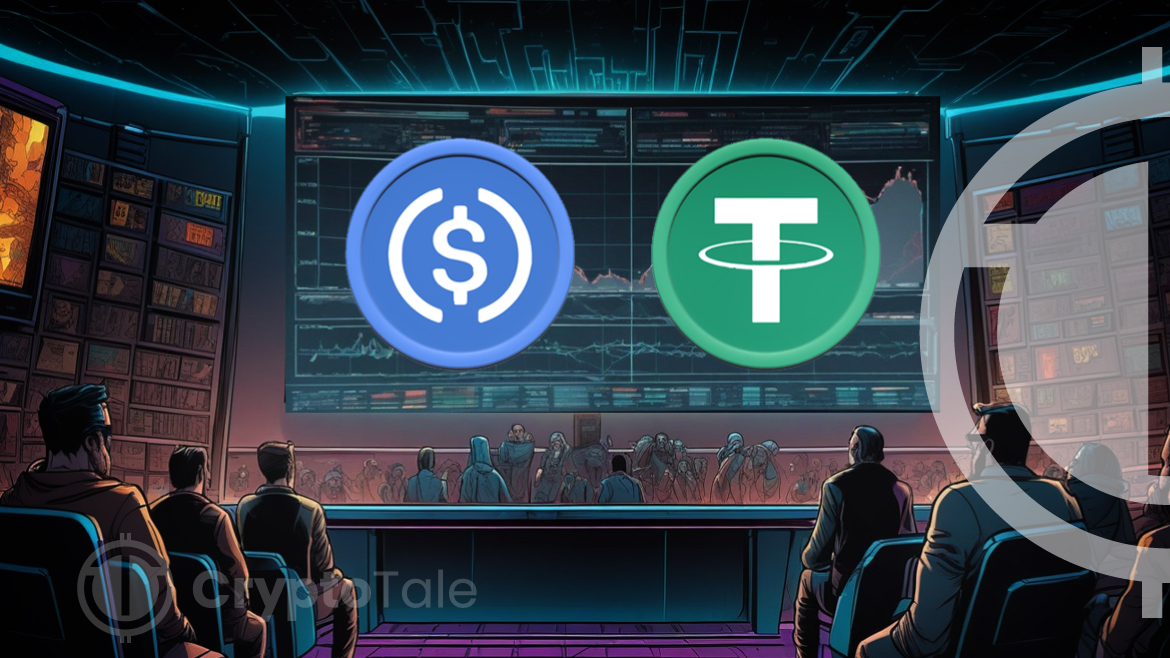- Collapse of Silicon Valley Bank rattles USDC stability, leading to a significant shift in cryptocurrency market confidence.
- The migration of investors from USDC to Tether is fueled by the perception that Circle favors CBDCs over decentralized cryptocurrencies.
- Rising U.S. national debt in contrast with strong GDP and low unemployment add intricate layers to cryptocurrency market dynamics.
The recent shift of liquidity towards Tether (USDT) and away from USD Coin (USDC) has raised eyebrows and fueled speculation .According to MetaLawMan, a legal expert, this movement in the cryptocurrency sector is occurring in tandem with an unusual economic situation.
The U.S. national debt has escalated by $2.5 trillion over a year, presenting a stark contrast against the solid GDP growth and low unemployment rates. This situation raises questions about the underlying factors influencing these shifts in the digital currency landscape.
As per Mike T, a prominent blockchain figure, USDC established itself as a stable and reliable stablecoin with the backing of Circle. It gained credibility through its compliance with regulatory standards and its association with traditional banking systems.
However, this reputation encountered a significant challenge following the collapse of Silicon Valley Bank (SVB). This event was particularly impactful because SVB held approximately $3 billion of Circle’s reserves. The collapse of SVB significantly undermined investor confidence in USDC, resulting in a noticeable decrease in market capitalization.
Market dynamics have also been shaped by the perceived position of Circle regarding cryptocurrencies. The prevailing opinion in the market is that Circle prefers central bank digital currencies (CBDCs) and shows a comparatively lukewarm attitude towards decentralized cryptocurrencies, notably Bitcoin.
As a result, this perspective has led a portion of the cryptocurrency community, including investors and users, to consider options like Tether. Tether is perceived as more closely adhering to the ethos of decentralization in the cryptocurrency world.
Complicating the matter are theories about Tether’s possible strategic market maneuvers. Speculation abounds that Tether might have been purchasing USDC using its reserves, redeeming them for USD, and then using the fiat to mint more USDT. Such a strategy, if true, could be a deliberate effort to replace USDC’s market presence with that of USDT. These theories, while intriguing, remain unconfirmed and speculative.
The broader economic context is essential in deciphering these shifts. The increase in the U.S. national debt, contrasted with positive economic indicators such as GDP growth and low unemployment, introduces additional complexity to the cryptocurrency market dynamics.
The liquidity flow from USDC to Tether is a complex phenomenon. It’s influenced by a mix of factors, including the SVB collapse, perceptions of Circle’s stance on cryptocurrencies, speculative strategies by Tether, and the overall economic climate in the U.S. This scenario highlights the dynamic and intricately linked nature of the cryptocurrency market, where market movements are significantly impacted by investor confidence and perceptions.












